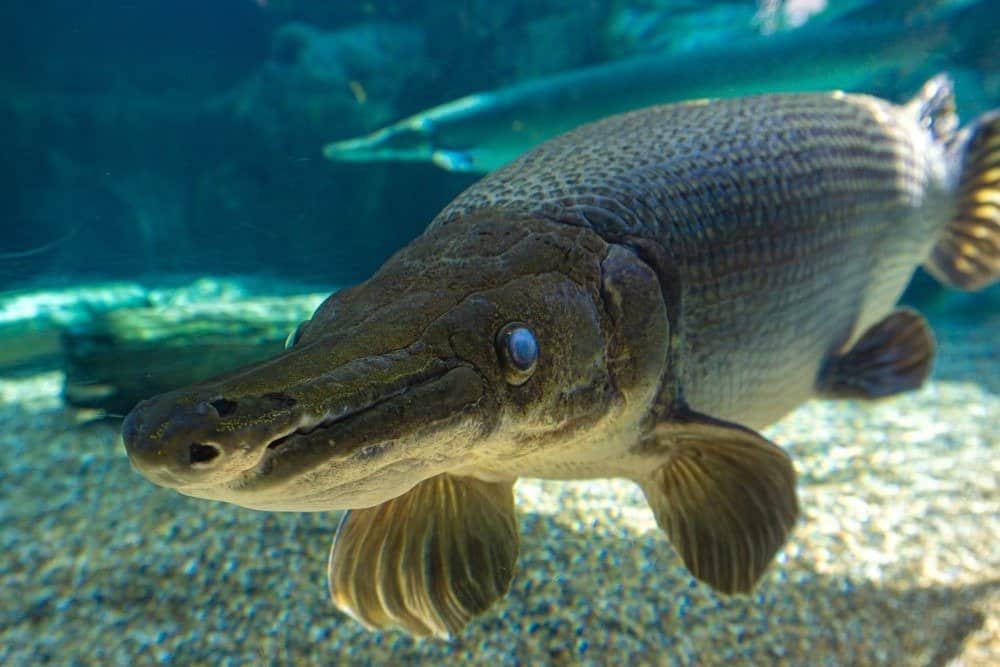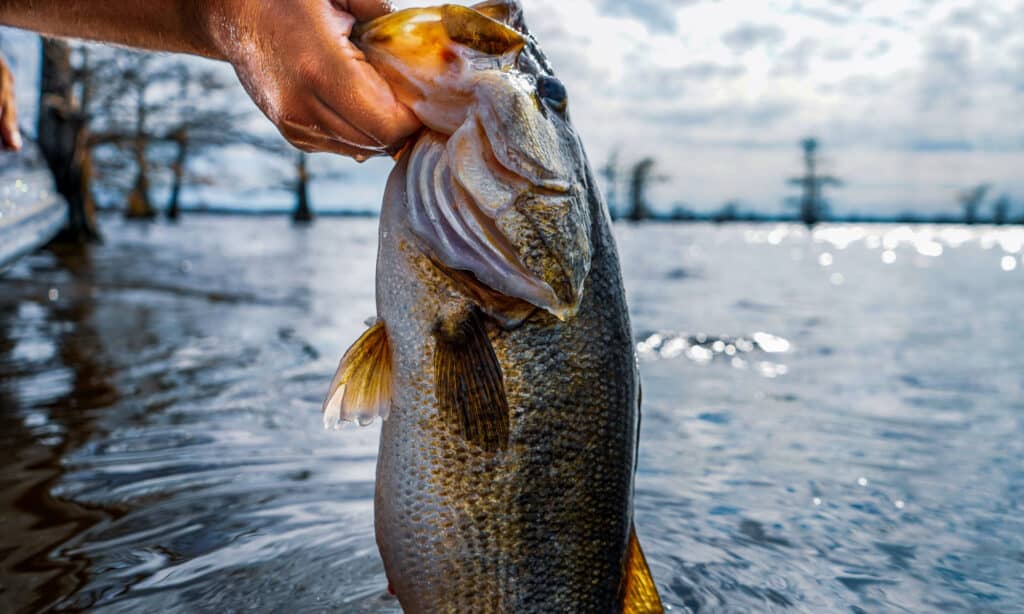The Brazos River , occasionally referred to as Rio de Los Brazos de Dios, meaning “The River of the Arms of God,” is one of the major rivers in Texas and the eleventh-longest river in the United States. The 44,620-square-mile river stretches from New Mexico and is one of the two main rivers that empty into the Gulf of Mexico. The Brazos River and the area around it are no stranger to wildlife and are home to various creatures. The construction of dams over the years and other human activities have impacted the river and the area around it.

Alligators, raccoons, foxes, owls, and snakes of all kinds, both venomous and non-venomous, among other animals, live in the area around the river. Over 44 fish species may be found in the river, with minnows and shiners being the most prevalent. The Brazos River is home to a variety of catfish, as well as freshwater drums, crappies, different types of bass, and other fish species. Wondering what the largest fish in the Brazos river is? Let us find out together.
Fishing in the Brazos River
The Brazos River is one of Texas’s largest rivers that supply water to numerous lakes, rivers, and streams. According to the requirements of river visitors, the Brazos Outdoor Center (BOC) provides free parking access to interested anglers, canoe/kayak rentals, and shuttle services. There are several opportunities to catch largemouth bass, spotted bass, and white bass in the Brazos River. The species of channel catfish, freshwater drum, crappies, and sunfish are also worthwhile targets. Low turbidity in the river is ideal for largemouth and spotted bass fishing because these species rely on sight to find food.
Known for being home to some unique river monsters, let’s explore some of the largest fish in the Brazos River.
1. The 7-Foot-7-Inch Alligator Gar

Despite their frightening appearance,
alligator
gars are not dangerous to people and have never been seen to attack them.
©TKBackyard/Shutterstock.com
The alligator gar is the largest of the seven gar species, and despite its name, it has no connection to an actual alligator. It is the largest species of fish in North America and prefers being in freshwater. The backwaters of big rivers are where alligator gars like to live, even though they occasionally live in brackish and salt water. Despite their frightening appearance, alligator gars are not dangerous to people and have never been seen to attack them. These bad boys are exclusive to North and Central America, mainly Texas, a portion of Mexico, Florida, Oklahoma, and Arkansas.
They can weigh up to 350 pounds and typically grow up to 10 feet long. In April 2019, two men from Cameron, Texas, caught a 7-Foot-7-Inch alligator gar in the Brazos River. The fish was close to 200 pounds, 198 pounds to be exact. Typically, the Texas Parks and Wildlife Department receives the head of a fish that size to estimate its age. By doing this, the department discovered that the alligator gar captured was nearly 60 years old, meaning it had hatched around 1959.
2. The Blue Catfish

Blue catfish typically grow up to 65 inches long and weigh 150 pounds.
©M Huston/Shutterstock.com
The blue catfish, the largest species in North America, typically grows to a length of 65 inches and weighs 150 pounds. Regarding feeding patterns and other routine behaviors, the blue catfish differs significantly from other ordinary fish and catfish species. It has been established that the simplest method of catching them is to lure them with some food because they frequently congregate near their principal food supply. Threadfin fish or a school of other smaller fish, whether living or dead, are the main forage for blue catfish.
An angler, Tony Montoya, captured the largest blue catfish ever recorded from the Brazos River in December 2018. Early in the day, he and his companion caught one that weighed about 40.8 pounds, a fish that may have been a lake record. They returned after dark and caught another, weighing 52.6 pounds, which broke the record for Brazos River.
3. The Largemouth Bass

The largest largemouth bass caught in the Brazos River weighed around 11.71 pounds and measured at least 26 inches long.
©Maclane Parker/Shutterstock.com
One of the world’s most sought-after freshwater game fish is the largemouth bass, for which various anglers have developed various techniques. Fishing with live bait, such as leeches, crawfish, and other creatures, is becoming the norm for anglers.
The largest largemouth bass caught in the Brazos River weighed around 11.71 pounds and measured at least 26 inches long. It was caught in the Brazos River in January 2016. Most largemouth bass grow to weigh around 5 pounds and reach lengths of 18 inches, although some reach lengths of 24 inches and occasionally even more.
Tips For Fishing in The Brazos River
The Brazos River is home to a wide variety of fish species, giving diverse types of fishermen the chance to visit the river and practice what they do best. Fishing on the Brazos River is a worthwhile experience, especially if you know what you are doing.
For the newbies, plastic worms and fake crawfish are the most common lures used for fishing in the Brazos River in Waco. Plastic jigs, tubes, crankbaits, and grubs work well on the river because you can easily see them and keep track of their location. The best live bait for largemouth bass and catfish are nightcrawlers or redworms if you prefer the option of live bait.
Over the bridges, either in the center or at the end, is the most typical location to cast your pole. There are also numerous sections of the Brazos River where anglers can find many fish. The most frequent locations will be shallow water areas along rock banks and deep pits away from the main river bank. Fish tend to remain in deeper water throughout the winter, but when summer approaches, you can find bass biting everywhere on the river at various times.
The photo featured at the top of this post is © iStock.com/stammphoto
Thank you for reading! Have some feedback for us? Contact the AZ Animals editorial team.







